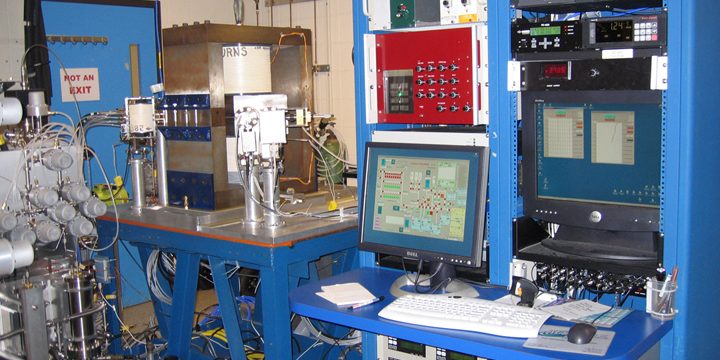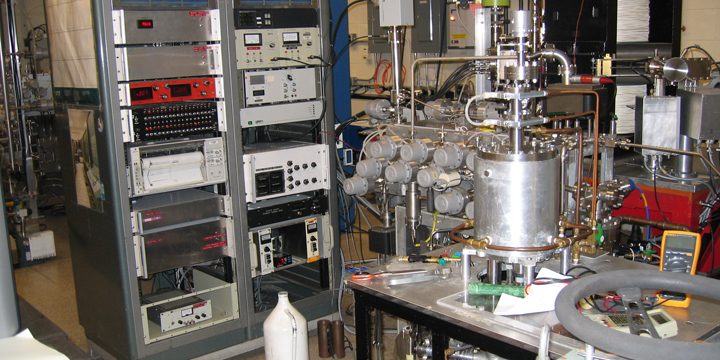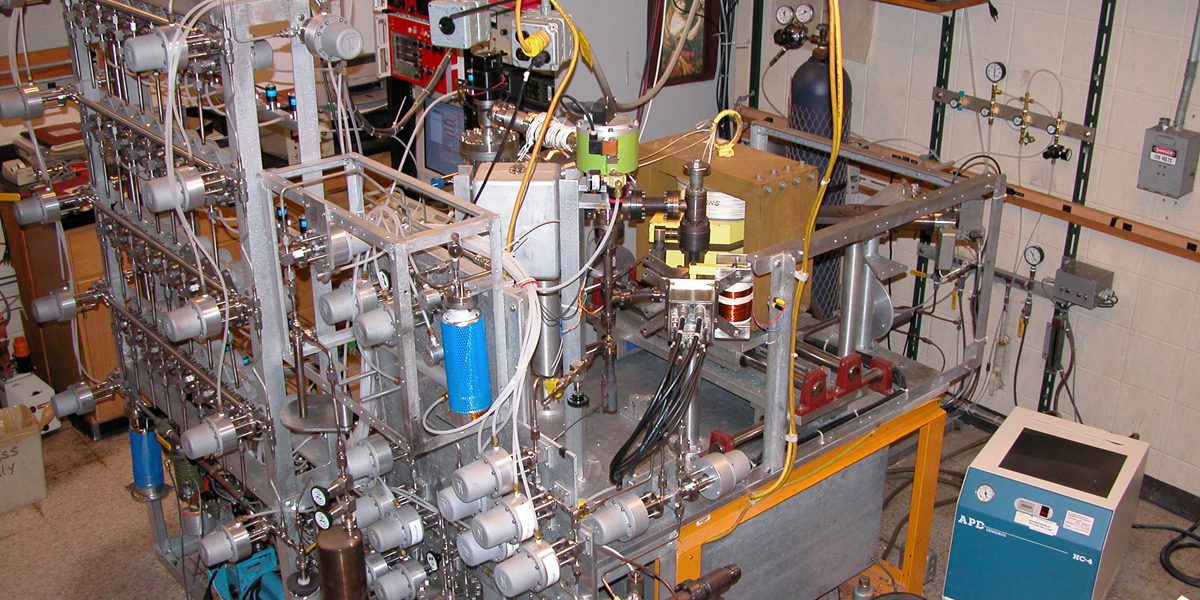Welcome to the Isotope Geochemistry Facility
The Isotope Geochemistry Facility was created in 1998 to provide state of the art noble gas abundance and helium isotope ratio measurements to the research community for a variety of materials, including seawater, fresh waters, groundwaters, natural gas, ice, rocks, and minerals. The facility consists of a number of high-vacuum sample processing systems and mass spectrometers. We have three branch tube magnetic sector mass spectrometers designed specifically for full dual collection and high precision helium isotope ratio measurements, and a number of quadrupole mass spectrometers for noble gas abundance and isotope ratio measurements. The sample processing systems are all heavily automated and have sophisticated cryogenic systems for gas purification and separation. We have had extensive experience (more than four decades!) with 3He/4He isotope ratio measurements in seawater, having made in excess of 20,000 measurements for GEOSECS, TTO, SAVE, WOCE, CLIVAR, and GEOTRACES surveys as well as other smaller programs. We have recently extended our measurement capabilities to include dissolved noble gases (He, Ne, Ar, Kr, and Xe) in seawater. We offer measurement services for the following:
- Helium concentration and isotope ratio in natural waters (seawater, lake water, groundwater)
- Tritium concentration in natural waters (for concentrations below 100 TU only)
- Noble gas concentrations and helium isotope ratios in natural waters
- He, Ne, and Ar abundances and isotope ratios in rocks by melting or crushing
- He isotopes and Ne in natural gases.
- NEW! High-precision (orders 0.001-0.01 per mil) isotope measurements of Ar, Kr, Xe, and N2 in water, air, and volcanic gas via dynamic dual-inlet mass spectrometry. See our companion lab site for more info.
_____________________________________
This laboratory facility benefits from the combined funding and logistical support of the Woods Hole Oceanographic Institution and the U.S. National Science Foundation.
Happy Holidays from the IGF: Tree Lowering 2022

A view of the operating console for our new noble gas and helium isotope measurement system, MS3. The instrument is completely automated, operates 24/7 and can be remotely monitored and controlled. Pictured on the left screen is the MS3 Server application, that allows local and remote system monitoring and controll. Client programs (two examples depicted on the right screen) work through the server via TCP pipes. This allows the system to be operated remotely from anywhere in the world where there's internet access. Extensive security protocols prevent unauthorized access.

Our rock analysis mass spectrometer system (MS2). This system has both a magnetic sector mass spectrometer custom designed for precision helium isotope measurements and a quadrupole mass spectrometer (QMS) for noble gas measurements. The system is fully automated and can measure gases evolved from either crushed or melted rocks.

Our workhorse helium isotope and tritium measurement mass spectrometer system (MS1). This instrument was first designed and built in 1975, and has evolved, grown, and been modernized over the years. It is fully automated and runs 24/7. The larger stainless steel cylinders near the bottom/center of the picture are the cryogenic traps that are used to transfer and purify He and Ne. The magnetic sector mass spectrometer (middle, right) analyzes the helium isotopes, while the QMS (lower right) previews samples and measures He and Ne. The automanifold (left) allows the "mounting" of up to 32 samples for measurement and unattended operation.